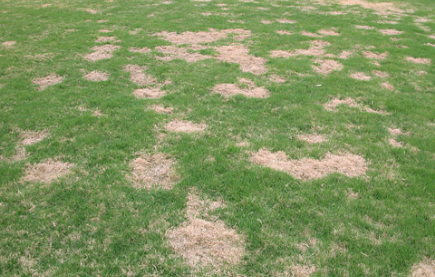
Winter kill refers to the damage caused to grass and other plants due to extreme winter conditions. It can manifest in various ways, such as brown patches, thinning grass, or even complete loss of vegetation.
Several factors contribute to this, including temperature fluctuations, ice accumulation, and the lack of proper lawn care before winter.
Rapid temperature changes during winter can weaken grass and make it more susceptible to damage. When temperatures fluctuate between freezing and thawing, the expansion and contraction of water within the grass cells can lead to cellular damage, resulting in brown patches and weakened root systems.
Snow acts as an insulating layer, protecting the grass from harsh winter conditions. However, in winters with limited snowfall, the absence of this natural protection exposes the grass to freezing temperatures, leading to dehydration and damage.
When melted snow or water refreezes, it forms a layer of ice on the grass surface. This ice layer prevents the grass from accessing oxygen and can suffocate the roots, causing significant damage.
Inadequate preparation before winter can exacerbate lawn winter kill. Neglecting to mow the grass to an appropriate height, failing to remove debris, or not conducting necessary fertilization or aeration can weaken the lawn, making it more vulnerable to winter damage.
Suggested repair:
Raking and removal of debris. Start the repair process by raking the lawn to remove dead grass, leaves, and other debris. This step will allow new grass to grow without obstruction and promote better air circulation.
Over seeding involves spreading new grass seed over the affected areas to encourage new growth. Choose a grass seed blend that is appropriate for the area (shade, full sun, or mixture of both) and follow the recommended application instructions. Ensure the soil is well-prepared and adequately watered for optimal germination.
Aerate the lawn to alleviate soil compaction and improve root development. This process involves creating small holes in the ground to allow air, water, and nutrients to penetrate deeply. Aeration promotes healthier grass growth and aids in the recovery of damaged areas.
Applying a balanced fertilizer rich in nitrogen, potassium, and iron can help rejuvenate the lawn. Fertilization provides essential nutrients to support new growth and strengthens the grass against further winter damage.
Adequate watering is crucial for the recovery of a winter-damaged lawn. Ensure that the soil remains consistently moist but not waterlogged. Deep watering encourages root growth and helps the new grass establish itself.
Understanding the causes behind potential winter kill and implementing effective repair techniques, you can restore the health and beauty of your lawn. Proper lawn care before winter, along with timely repairs, will help prevent future instances of winter kill and will contribute to a vibrant and lush lawn year after year.
